Ancient Ship Found Completely Preserved in Baltic Sea
The following story about the remains of a 500-year-old shipwreck found in pristine condition at the bottom of the Baltic Sea is gripping. Who would have imagined that the royal warship thought to have sunk for hundreds of years would be found with all its hull and mast intact?
The vessel, believed to date to the late 15th or early 16th century, has led marine archeologists and a team of international scientists to probe into the untainted remains of this medieval warship.
The Little Island Called Stora Ekon
In the far south of Sweden, near the town of Ronneby, exists a little island called Stora Ekon (Great Oak Island). Graced with pine trees, deserted holiday cottages, and sheep, this tiny island is one of the many islets that protect the coastlines from the Baltic sea storms.
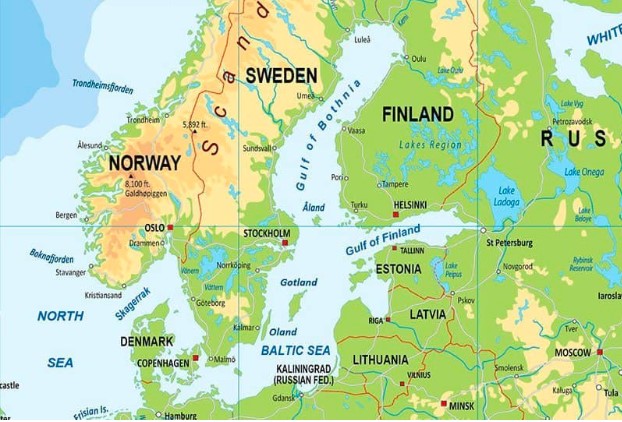
Source: Valentyn Starkov/ Facebook
The Baltic Sea is of great interest to scientists and historians, as it represents the economic center of the medieval trading group of Northern European ports.
The Peace It Once Knew
Stora Ekon was once surrounded by high water and served as a popular anchorage place for centuries. Now, with a deafening silence and the waters quiet, the only visitors are a few pleasure boats and sea swans.
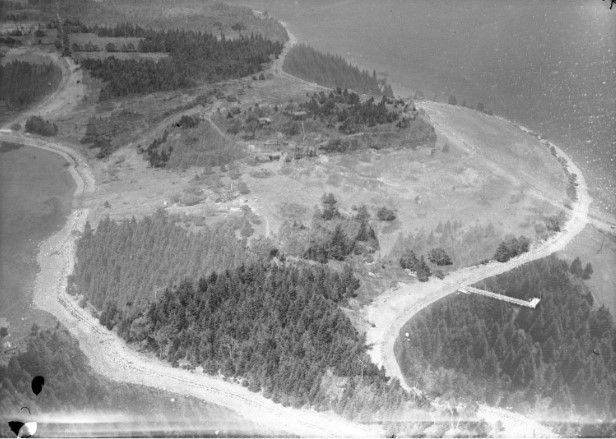
Source: Wikimedia Commons
The peaceful experience was short-lived as a new island invaded the scene. The intruder was a square wood raft with two shipping containers a few hundred feet away from Stora Ekon’s shoreward coast
Underwater Detection of Mysterious Shipwreck Dubbed 'Gribshunden'
The floating raft was busy with amateur divers and archeologists on a mission to explore what the cold waters of the Baltic sea had kept secret for 500 years. Beneath the waves lies the mysterious shipwreck called Gribshunden.
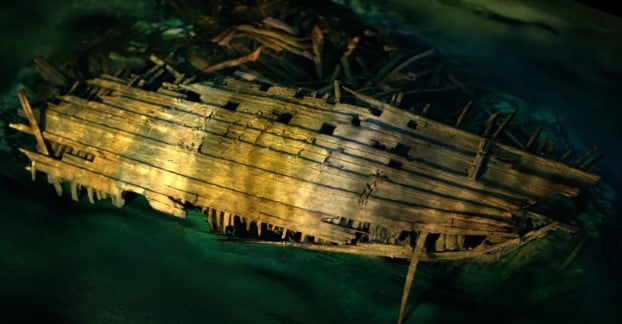
Source: Blekinge Museum/ YouTube
Built in 1485, the Gribshunden was a Danish warship that served as the royal flagship and seat of government for King Hans of Denmark. Per historical sources, the ship sank along with soldiers, Danish noblemen, and the accompanying squadron.
The King’s Precious Vessel
The Gribshunden (“Griffin-Hound”) was the flagship of the royal fleet of King Hans of Denmark. The king loved the ship and had extensively used it, sending it as far afield as England and Greenland.
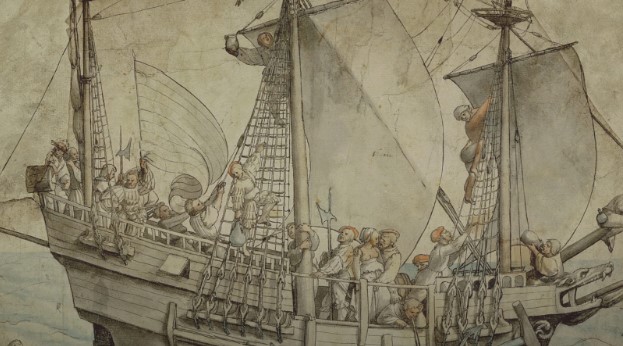
Source: SeaCentral/ YouTube
He regularly sailed on her and was aboard the ship for its final voyage — which was in the summer of 1495. The Gribshunden led a squadron of ships escorting the king from Copenhagen, Denmark to Kalmar, Sweden.
The Impressive Build of the 'Gribshunden'
With the caliber of the king, one should expect that the Gribshunden was amazing to behold. Gribshunden was one of the earliest European naval vessels armed with guns and military weapons.
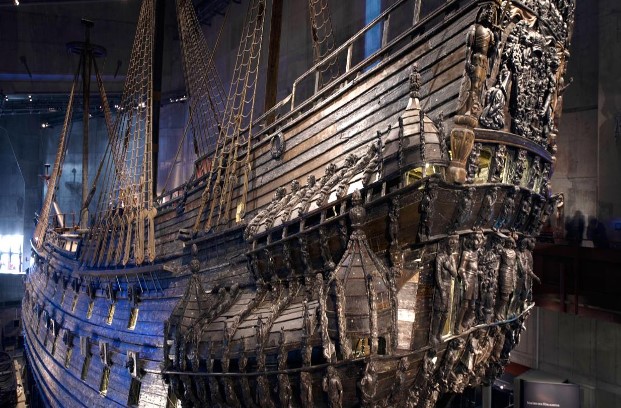
Source: Imgur
The vessel style was cutting-edge for its time and large at about 32 meters in length. She was a new amalgamation of northern European and Mediterranean architecture, a fusion of disparate styles and building techniques.
The Special Circumstance of the Vessel’s Last Voyage
At the end of June 1495, the Gribshunden anchored on Stora Ekon, conveying the king, noblemen, soldiers, and courtiers from Copenhagen to a political summit in Kalmar, Sweden, to negotiate with Stern Sture, the elder of the Swedish noble council.
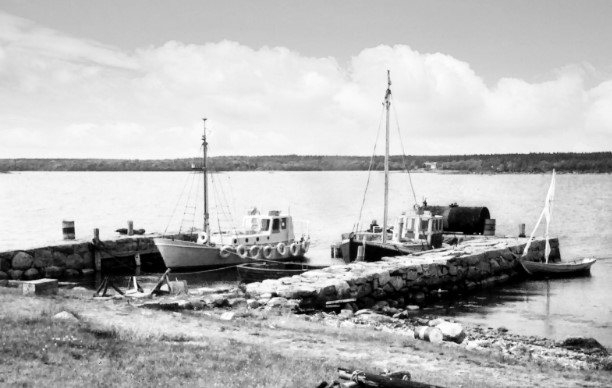
Source: Kenty Magnusson/ Facebook
At that conference, Hans expected the Swedish Council to accept his rule and elect him king of Sweden, fulfilling his ambition to reunify the Nordic region under a single crown. Along the way, the ships anchored near Ronneby, Blekinge.
Women Aboard the Ship
King Hans was known to set sail with ranks of noblemen, soldiers, and different social groups who walked the decks. The royal court and nobles represented the elite, the ship’s captain and senior officers were another stratum, and the hired soldiers and crew were the lowest social group in this floating castle.
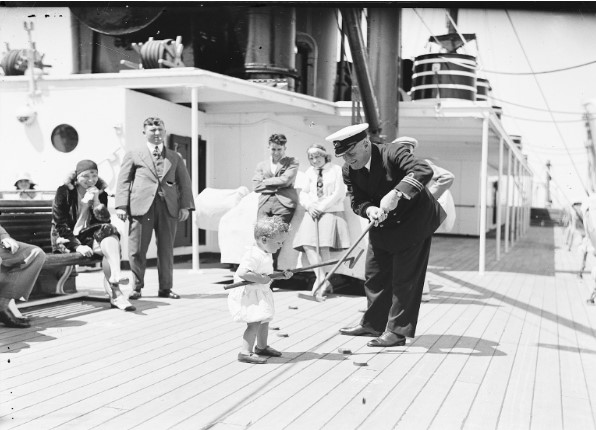
Source: Wikimedia Commons
Although the historical written sources are mute on whether women were aboard the ship, archaeology may reveal this aspect of fact later.
About the Kalmar Union
The Kalmar union was a political coalition between Sweden, Denmark, and Norway for almost a century. Although these countries technically remained sovereign states, a single monarch directed the affairs of all three.
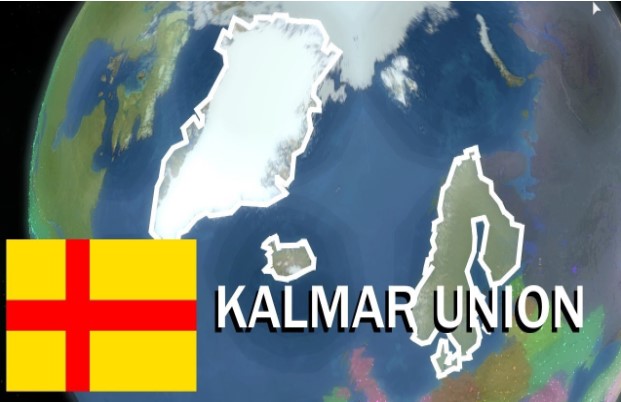
Source: Roblox/ YouTube
The union was always a victim to the conflicting interests of monarchs who wished to create a strong nation-state and those of the nobility, particularly in Sweden, who did not want to cede their power to a central monarchy. King Hans intended to reestablish the Kalmar Union while asserting his authority over Sweden as their king.
King Hans’s Display of Royal Power
According to sources, King Hans converging on the fleet was a display of royal power and meant to impress the gathering of Swedish nobility at Kalmar. Along with the king, he had an entourage of courtiers, noblemen, soldiers, and even the royal astronomer.
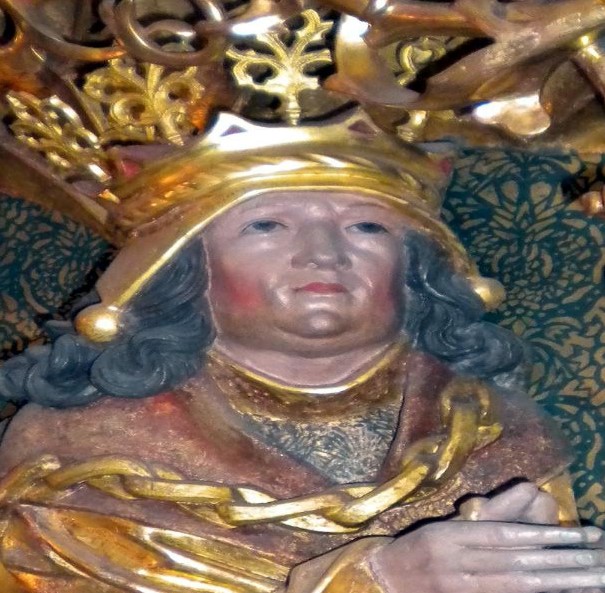
Source: Wikimedia Commons
The elite group paraded in their finest clothing. The soldiers were armed with the latest gunpowder weapons. The king ordered the ship stores be filled with the most extravagant food and drinks for days of lavish feasting.
The Sinking of the 'Gribshunden'
When the ship anchored off to the Great Oak Island, Hans disembarked to meet with officials in the town of Ronneyby. Unfortunately, while he was ashore, a wildfire and explosion claimed the ship together with soldiers and noblemen.
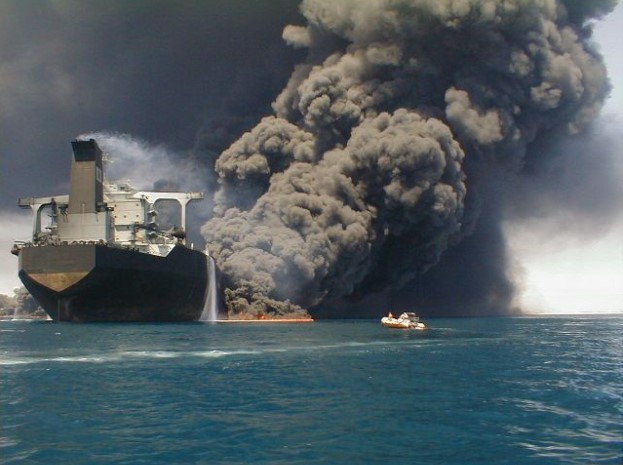
Source: Lazy Penguins/ Pinterest
On the Southern coast of Sweden lies the wreck of the 115-foot-long medieval warship Gribshunden. The hall settled on the seafloor, about 11 meters of water. She is one of the best-preserved ships found from the Age of Discovery.
The Status of the Meeting
At the time of the explosion, King Hans was not aboard. But, it was reported by expedition member Tyge Krabbe that many of the 150 crew who were on the ship died as it sank. Hans continued to Kalmar after the loss of his flagship.
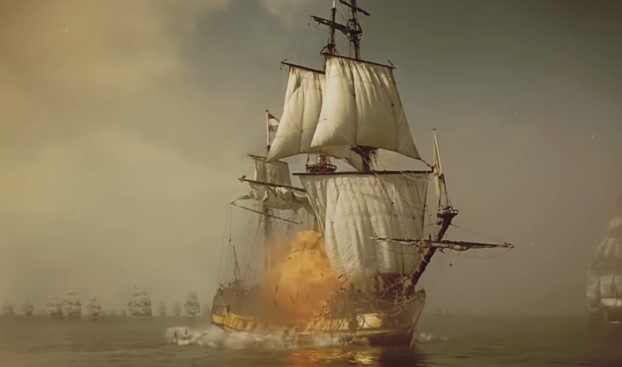
Source: iStock
Unfortunately, Sten Sture never turned up for the meeting, leaving the status of the Kalmar Union uncertain for the next two years until the 1497 Battle of Rotebro, where the Union was reaffirmed by John’s victory and Sten’s defeat.
Rare Occurrence of Shipwrecks
During the medieval period, shipwrecks were a rare occurrence. Archaeologists believe this wrecked vessel has historical significance because of its period.
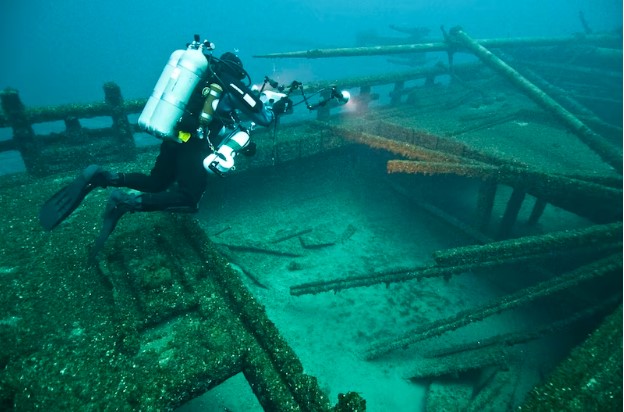
Source: NOAA/ Unsplash
“The dating of this wreck underlines the importance of the discovery,” Dr. Pacheco-Ruiz wrote in an article about the discovery. “It is rare to find a ship in such an astonishing condition that predates the larger and more powerful vessels involved in the later Northern Seven Year’s Wars (1563-1570) – a period of great importance which defined the path of modernization of Scandinavian nations.”
Brackishness of the Baltic Waters: A Blessing in Disguise
This discovery has left many bewildered at how the wrecked ship survived for 500 years. Typically, unless a shipwreck was buried by marine sediments, the destroyed wood quenches the hunger of raging shipworms.
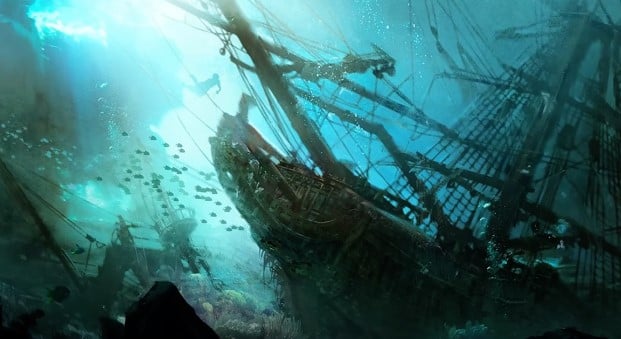
Source: The Upworld/ YouTube
But thanks to the brackish waters of the Baltic sea with low oxygen levels, the chances of these organisms surviving are second to none. As a result, this ancient warship has been left free of seaworm damage and is among the best-preserved ships from this period.
The Special Characteristics of the Baltic Sea
Again, history has the special characteristics of the semi-closed Baltic sea off the coast of Ronneby to thank for this discovery.

Source: Stephane Bonneau/ Facebook
“The wreck is in such good condition because of the strange Baltic environment. The low salinity here is unsuited for shipworm, which eats wood in the world’s ocean system. The seafloor is a fine clay, ideal for preserving organic material, and low dissolved oxygen levels further contribute to the preservation of organics,” said Brendan Foley of Lund University, who supervised the excavations.
The Astonishing Preservation of the Wrecked Ship
The newly discovered wreck lies on the seabed with her hull structure preserved from the keel to the top deck, with all her masts and some elements of the standing rigging still in place.
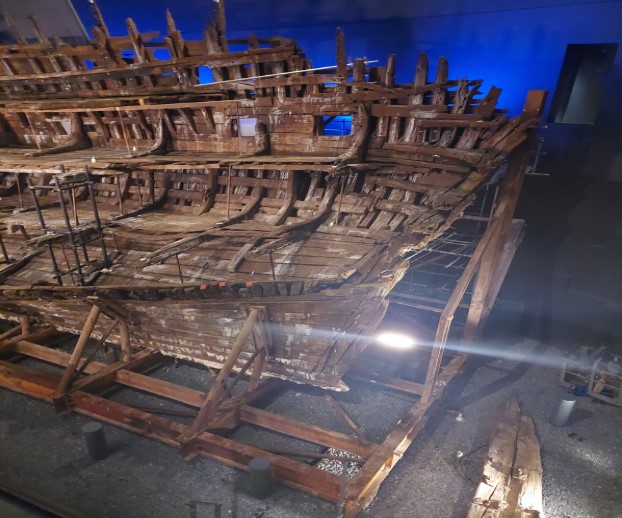
Source: Gribshunden/ Facebook
The ship’s bowsprit – which extends out the front of the vessel – is visible. The wooden capstan and bilge pump, and other rare elements, can also be gleaned. Swivel guns were also found intact, along with a tender boat that would have been used to ferry crew to and from the ship. It’s almost like it sank just yesterday.
The Discovery of the Shipwreck
In the 1970s, the local diving club discovered the shipwreck at a depth of 10 m (33 ft) in the southwestern Baltic Sea north of Stora Ekon. Nobody at the time recognized the gravity of the find’s significance.
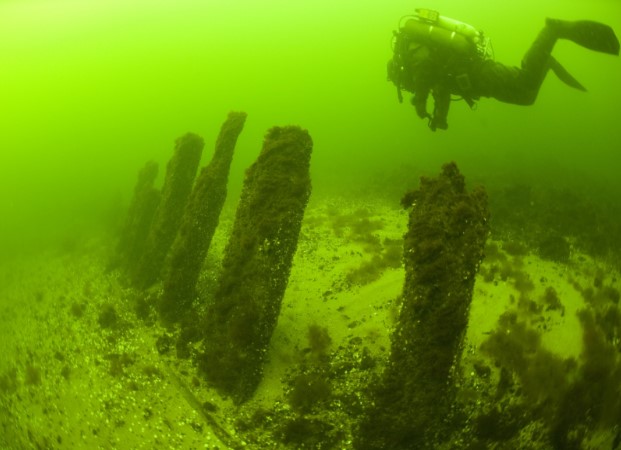
Source: Wikimedia Commons
So, the wreck’s site remained a backup for the divers when the weather precluded them from diving in the other areas. Unaware of the wreck’s identity, the divers did not tell local archaeologists about the discovery until 2001.
The First Archaeological Investigations
The first archaeological investigations followed in 2001 and 2002. In 2013, upon discovering the hollowed-out logs and gun carriages, the researchers realized that the wreck wasn’t a fishing vessel but a warship.
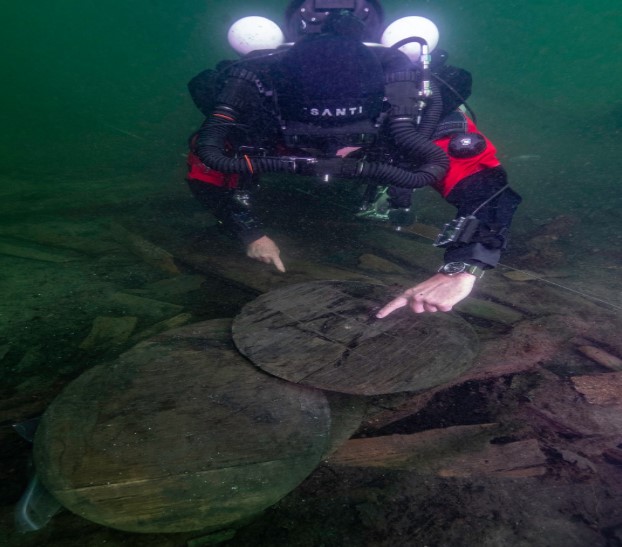
Source: Gribshunden/ Facebook
Archaeologists identified the ship as Gribshunden using techniques like a dendrochronological sampling of the ship’s timbers, which showed that they came from the royal flagship that sank in the summer of 1495. With medieval experts like Niklas Eriksson, the true identity of the ship was made known.
A Glimpse into the Possessions of King Hans
Thanks to the cold brackish waters of the Baltic sea, archeologists have an unprecedented look at the life of a medieval king who was said to travel with an abundance of royal possessions like silver, gold, spices, food, clothes, royal charters, and also military artifacts.

Source: SeaCentral/ YouTube
Also, this ancient relic provides a unique opportunity to examine a state-of-the-art warship from a period when a revolution in shipbuilding and naval warfare was reshaping geopolitics and transforming civilization.
Military Artifacts Found in the Medieval Ship Wreckage
The military artifacts found in the wreckage are chain mail, crossbows, bones, barrels, glass, and capstans. Notably, the shipwreck remains loaded with artillery consisting of iron cannons, and 11 mountings have been counted so far.
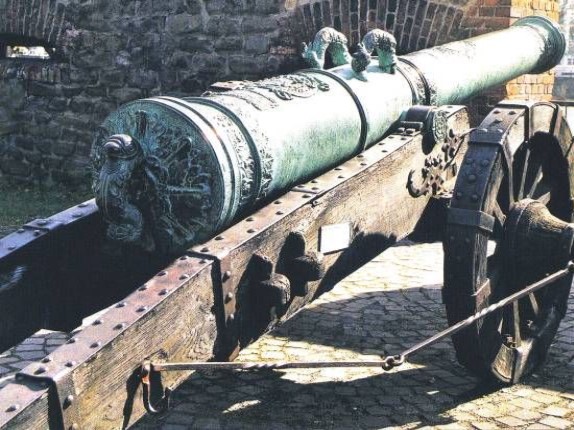
Source: Kanonen Lafette/ Pinterest
The artillery consisted of light, anti-personnel guns that were not intended for the sinking of ships. Instead, they offered support for hand-to-hand combat forces. In 2021, a 13.5-foot-long gun carriage and carved linstock were discovered in the wreckage.
Notable Finds from the Wreck
Between 2000 and 2012, marine archaeologists recovered several artifacts during excavations at the site. After a hiatus of several years, a new research initiative was launched in 2019, and explorations continued recently into 2020 and 2021.

Source: Frido Welker/ Twitter
Among the shocking discoveries during the excavation was a wooden barrel containing the well-preserved remains of a butchered Atlantic sturgeon fish. Brenden Foley documented this finding in a study published in the Journal of Archaeological Science.
Exoctic Spices Discovered
Nothing could have prepared researchers for the haul of well-preserved plant materials they found. A total of 3097 plant remains to represent 40 species were identified from the sediment samples.
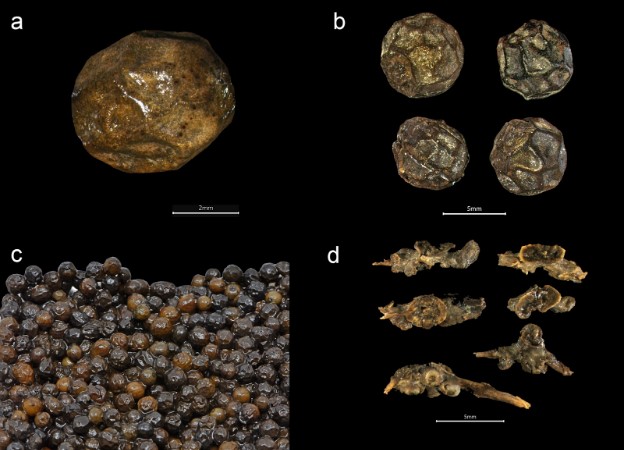
Source: Archaeology Magazine/ Twitter
They comprise one species of cereal, one species of oilseed, four species of fruits and vegetables, eight species of spices, two species of nuts, one species of medicinal plant, and 23 species of wild taxa. All recovered remains were subfossil specimens.
Implications of the Plant Remains
The plant remains uncovered from this ancient flagship Gribshunden demonstrates that delicate plant parts which do not survive in the archaeological contexts on land can be in the marine environment underneath the frigid Baltic sea.
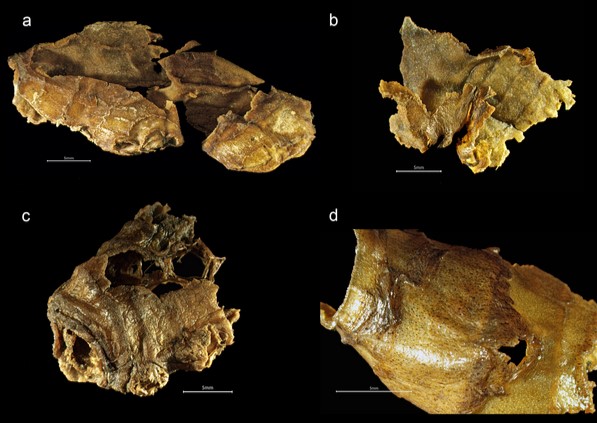
Source: Archaeology Magazine/ Twitter
The archaeological potential of plant remains in underwater environments connected to wreck sites is extraordinary. The presence of a diverse range of economic plants aboard the ship indicates the high-status lifestyle of the Danish king.
Findings of Plants Consumed as Flavorings
Among the discoveries were plants consumed as flavorings like saffron, cloves, ginger, peppercorns, mustard, and caraway. There were also others eaten as snacks or used in baking, such as almonds, hazelnuts, blackberries, raspberries, grapes, flax, and even meal plants like cucumber.
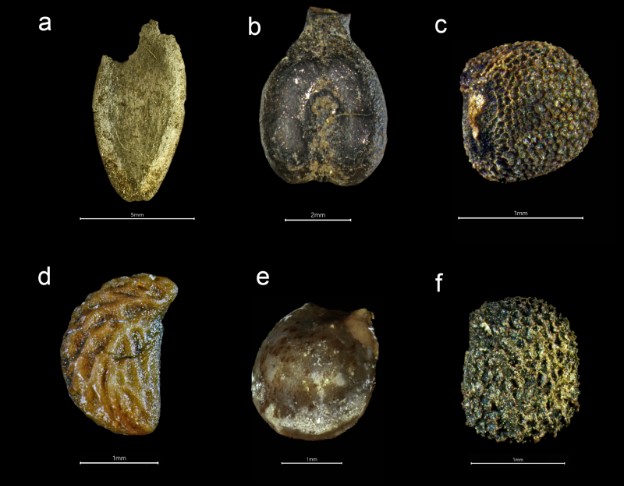
Source: Archaeology Magazine/ Twitter
“In the field, we knew that we had something special the moment the exotic spices appeared in the excavation,“ Foley said. “The saffron was obvious—nothing else looks like it. And we also could see peppercorns in the excavated material. We expected there would be more, but we needed the expertise of an excellent archaeobotanist.”
The Dragon-Like Sea Monster
Furthermore, in August 2015, this mysterious ship attracted international media attention when a nearly perfectly-preserved wooden grotesque figurehead (weighing about 250 kg (551 lb)) of a mythical beast was recovered from the stem and brought to the surface.
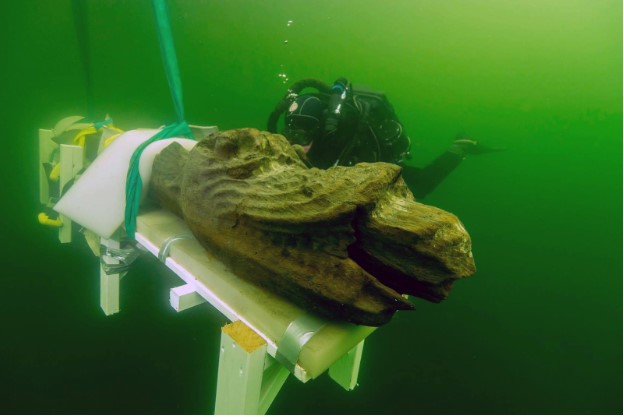
Source: Gribshunden/ Facebook
Suggestive of the ship’s Gribshunden (“Griffin-Hound”) name, the chimeric figurehead is described as a dog-like or dragon-like sea monster with lion ears carved to resemble a monster devouring a person in its crocodilian mouth.
The Mystery of the Cause of this Historical Mishap
Unfortunately, while many lives were lost in the explosion, others scurried for survival by throwing themselves into the water. And, unfortunately, they drowned. It is unclear what caused the sudden fire and explosion on the Gribshunden. Some accounts say it was caused by lightning.
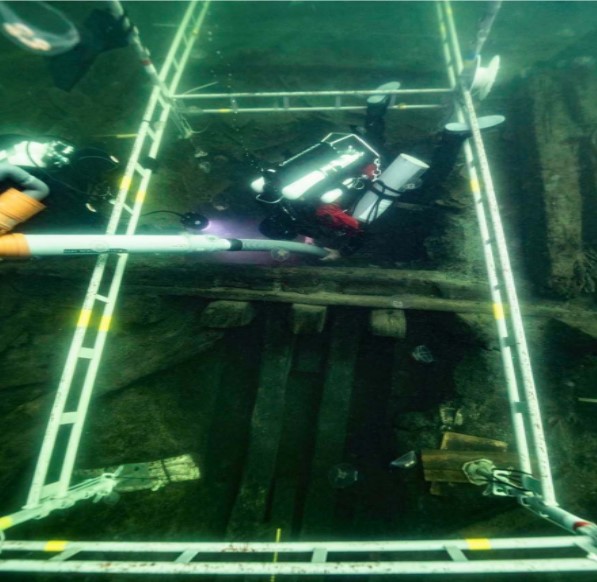
Source: Gribshunden/ Facebook
Based on later chronicles, the most likely cause was gunpowder stored in the ship’s hold that accidentally ignited, setting off a fire aboard the ship. But, the details remain unknown.
The Preservation of this Event in Chronicles
The story of the Gribshunden is recorded in the contemporaneous Swedish Sturekronikan (The Sture Chronicle) and two German sources, Reimar Koch’s Lubeck Chronicle and Caspar Weinreich’s Danzig Chronicle.

Source: EvnArm/ Twitter
It is also preserved in an eyewitness account by a young survivor of the explosion. The accounts describe how King Hans, who reigned over Denmark and Norway from 1481 to 1513, sailed east from Copenhagen in the summer of 1495 toward Kalmar, Sweden, to attend a political summit.
Introducing Brendan Foley
Brendan Foley, an author of the study from the Department of Archaeology and Ancient History at Lund University, Sweden, is on a quest to explore this underwater vessel. When he first heard about the wreck, he was in disbelief.
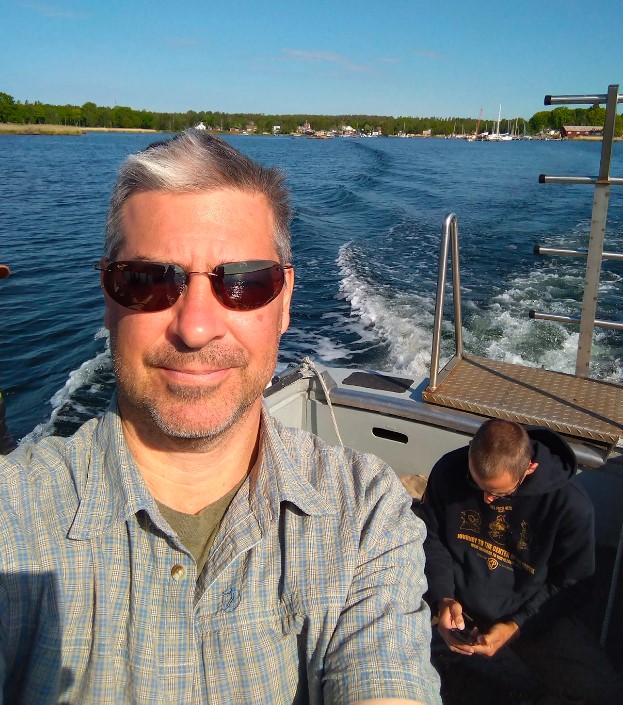
Source: Brendan Foley/ Facebook
“I thought if it was important, I’d have heard of it already,” he says, sitting in a makeshift office on the dive platform. He began his journey to Stora Ekon in 2017 on a quest to see the wreck himself.
The Quest for Exploration
Interest in the ship swelled in 2018 as Foley formed an association of Swedish and Danish institutions. He also secured funding from the Crafoord Foundation, founded by the entrepreneur behind Tetra Pak, a multinational food packaging conglomerate, to explore underwater.
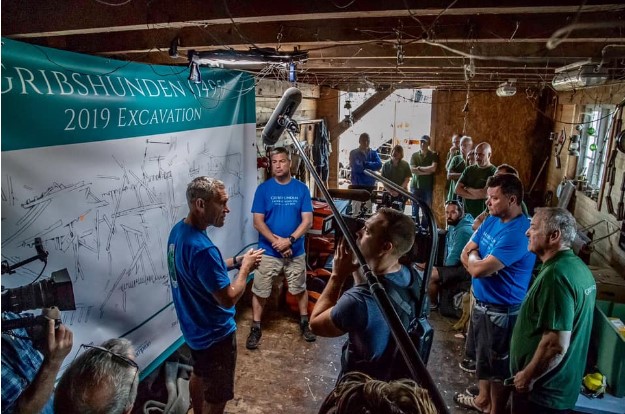
Source: Gribshunden/ Facebook
In 2019, the international group he had assembled set up a white scaffold on the seabed to define their excavation trench. Also, they choose a site near the ship’s stern.
And So It Began
The explorers began to work together in pairs at the seabed as each archeologist was paired with a dive specialist. No debris, smashed barrels, or the firewood was left unturned as they searched through layers of dirt underneath the water.
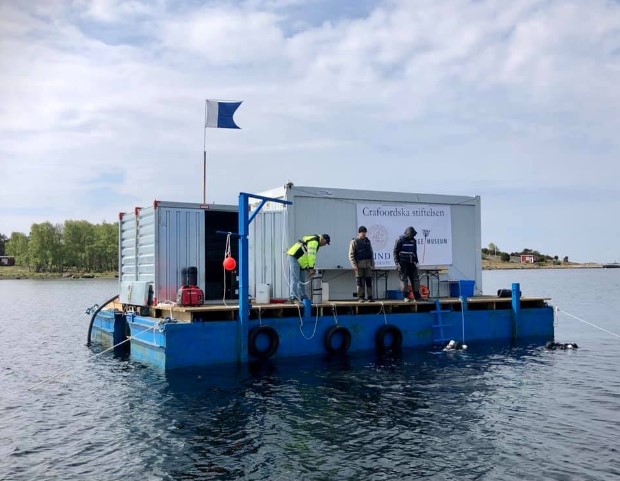
Source: Gribshunden/ Facebook
Even though everything was covered in black sediments and marine growth, it didn’t deter these committed experts. As they worked at each stage of the excavation, they took photographs and videos for record purposes.
Discovery of Decorated Birch Bark
A louse comb, lumps of silver coins, and a wood tankard inscribed with a crown symbol were all part of the scattered remains found in this mysterious shipwreck. All these findings gave insights into the daily life of this ship that housed the lost souls.

Source: North Shore Retreat/ Pinterest
Another unexpected discovery was the several panels of decorated birch bark. From the detailed peacock design to the beast that resembles a unicorn, truly this was no ordinary ship but the lost Gribshunden.
A Giant Wooden Fork
Shortly after two hours underwater, Foley emerged with an item resembling a giant fork that was later identified as a linstock. Carved on it was a symbol of two vertical strokes indicating the owner’s mark.

Source: Gribshunden/ Facebook
Amidst the finds were nine wooden gun carriages, a 13-5 foot long carriage far larger than the ones previously found. Certainly, these were some of the scattered remains that attested to the lost Gribshunden’s military might.
Copper Rings
One can say that so many objects without archeological precedent emerged from this excavation. Only two meters away from the weapons locus was a cluster of small finds that were uncovered. Also, there were hundreds of copper rings linked together that sat atop a badly degraded pile of iron oxide.
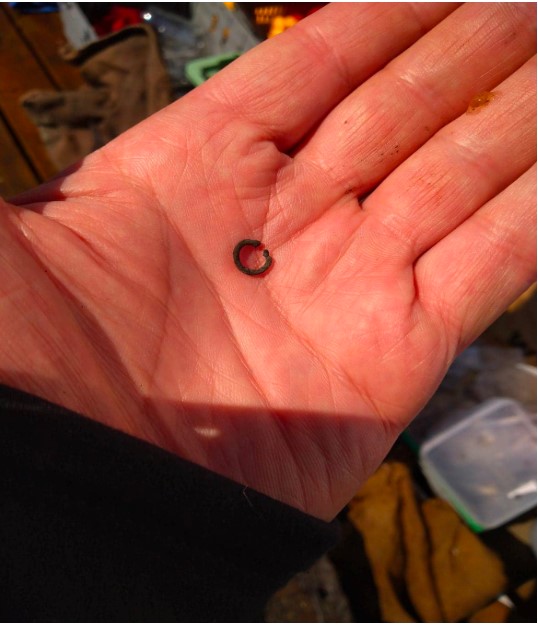
Source: Brendan Foley/ Facebook
The copper links embellished the cuffs, collar, and waist of an iron mail shirt worn by a soldier. Though barely discernable through the tarnish, its symbols hinted that this could be the maker’s mark of the armor.
The Excavation Continues
For three weeks, this international team of maritime archaeologists mapped the wreck in exquisite precision and excavated about a 6 x 2m trench in the middle of the ship.

Source: Gribshunden/Facebook
At Lund University, a dozen researchers from different scientific fields launched an interdisciplinary study of all the artifacts raised since the 1970s. The results of this investigation not only highlight aspects of nautical archeology but Hans’ attempt to build a new nation-state at the end of the Medieval period.
A Fusion of Maritime Technologies
The wreck of the Gribshunden was indeed an essential find for archeologists. The ship represents the fusion of various maritime technologies. The medieval artifacts give experts a glimpse of the life of a royal personage of the period.

Source: Gribshunden/ Facebook
Additionally, the wreck also provides clues on how shipbuilding techniques were transmitted and how ships like the wrecked Gribshunden influenced the balance of power in the Baltic and across the globe at large.
There’s More To Be Uncovered
A high percentage of the wreck is still unexcavated and unexplored. As the project continues, these experts expect to uncover more about this historical ship. The structure of this hull and upper works will showcase the Ship of Discovery as a technical achievement.
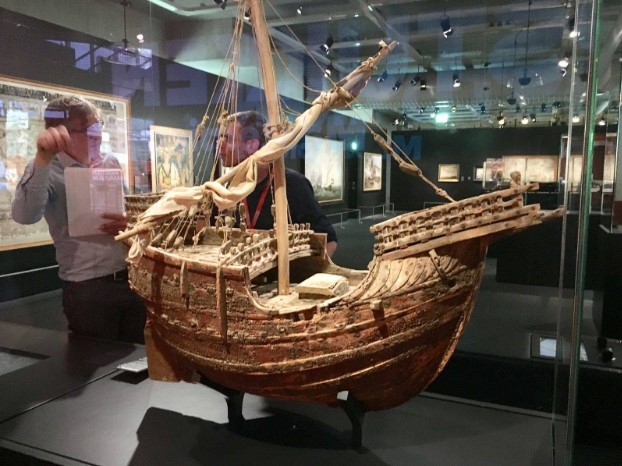
Source: Gribshunden/ Facebook
Conversely, the ship’s internal layout and physical spaces occupied by the various ranks of men aboard will demonstrate the origins of today’s naval traditions. This shipwreck is rewriting history.
